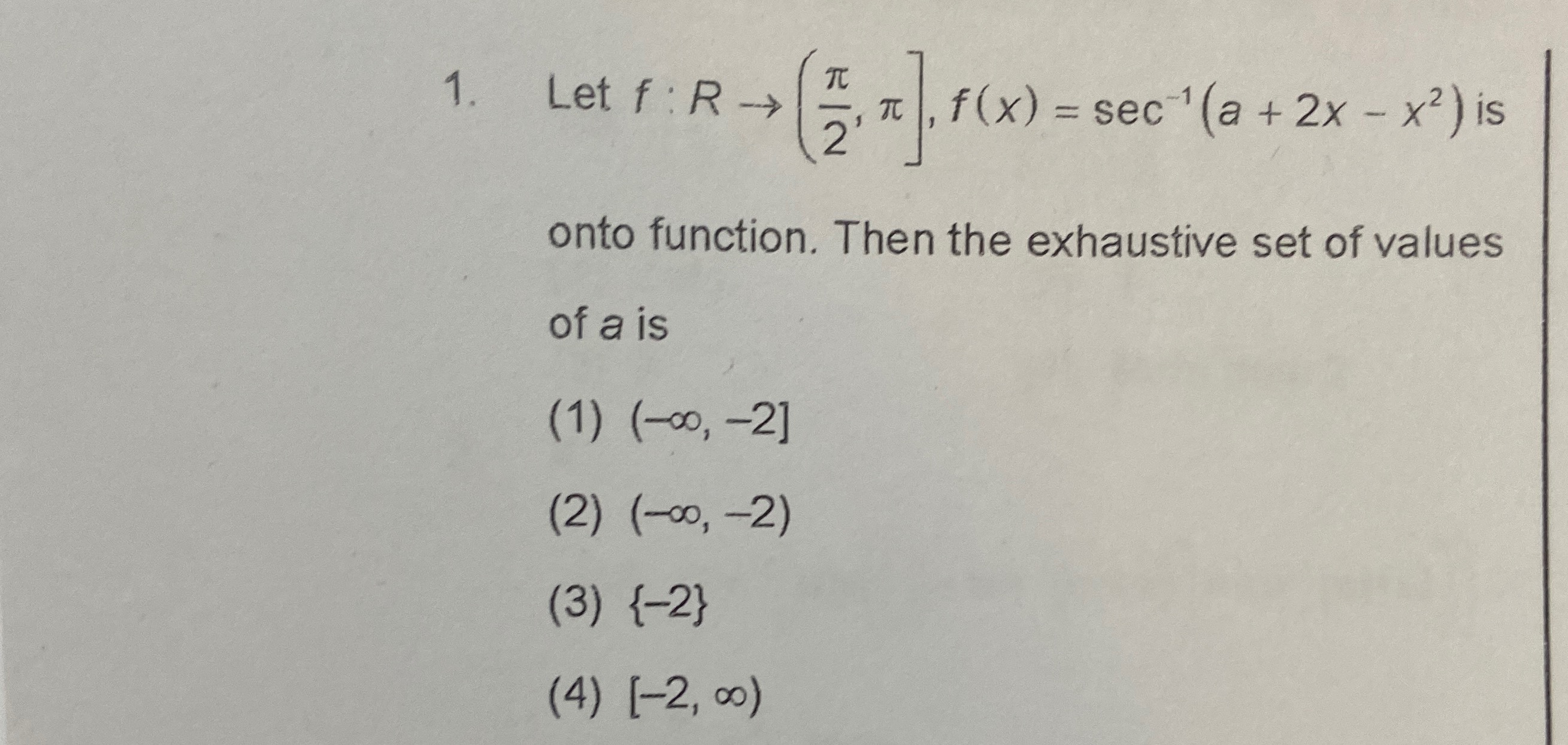Question
Question: Let $f: R \rightarrow (\frac{\pi}{2}, \pi]$, $f(x) = \sec^{-1}(a+2x-x^2)$ is onto function. Then the...
Let f:R→(2π,π], f(x)=sec−1(a+2x−x2) is onto function. Then the exhaustive set of values of a is

(−∞,−2]
(−∞,−2)
{−2}
[−2,∞)
{-2}
Solution
The function is given by f(x)=sec−1(a+2x−x2). For f(x) to be defined for all x∈R, the range of g(x)=a+2x−x2 must be a subset of the domain of sec−1.
The domain of sec−1y is (−∞,−1]∪[1,∞).
Let g(x)=a+2x−x2=−(x2−2x)+a=−(x−1)2+1+a. The range of g(x) for x∈R is (−∞,a+1]. So, we must have (−∞,a+1]⊆(−∞,−1]∪[1,∞). This implies a≤−2.
Now, the function f is onto the codomain (2π,π]. This means that for every y∈(2π,π], there exists at least one x∈R such that f(x)=y.
y=sec−1(a+2x−x2). Since y∈(2π,π], sec(y) is defined and sec(y)∈(−∞,−1]. Let z=sec(y). As y ranges over (2π,π], z ranges over (−∞,−1]. So, for every z∈(−∞,−1], there must exist an x∈R such that a+2x−x2=z. This means that the range of g(x)=a+2x−x2 must include the entire interval (−∞,−1]. The range of g(x) is (−∞,a+1]. So, we require (−∞,−1]⊆(−∞,a+1]. This inequality of intervals holds if and only if −1≤a+1, which means a≥−2.
For the function to be onto, both conditions must be met:
- The range of g(x) is a subset of the domain of sec−1. This gives a≤−2.
- The range of f(x) is equal to the codomain (2π,π]. This means that the range of g(x) must cover the values in the domain of sec−1 that map to (2π,π]. The domain of sec−1 that maps to (2π,π] is (−∞,−1]. So the range of g(x) must be exactly (−∞,−1].
The range of g(x)=a+2x−x2 is (−∞,a+1]. For this range to be equal to (−∞,−1], we must have a+1=−1. Solving for a, we get a=−2.
Thus, a=−2 is the only value for which the function is onto the given codomain.
